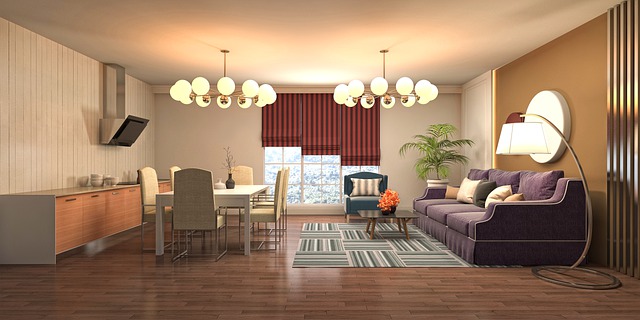3D modeling and rendering have become essential tools in today's digital era, aiding professionals across architecture, design, engineering, and gaming to create precise digital models, enhance collaboration, optimize structures, and reduce project timelines. Key software choices vary based on project complexity and skill sets, with industry leaders offering advanced features for complex tasks and user-friendly options for simpler projects. Modern advancements enable swift production of highly realistic visuals, streamlining workflows and facilitating rapid design iterations.
In today’s visual-driven landscape, 3D modeling and rendering have emerged as indispensable tools for designers, engineers, and developers. This article delves into the transformative power of these technologies, exploring their diverse applications from conceptual design to detailed development. We’ll guide you through choosing the right software, mastering advanced techniques, and optimizing workflows. By harnessing the full potential of 3D modeling and rendering, professionals can elevate their projects, fostering innovation and delivering stunning visual experiences.
Understanding the Power of 3D Modeling and Rendering
In today’s digital landscape, 3D modeling and rendering have emerged as indispensable tools for professionals across various sectors. This powerful technology allows designers, engineers, and developers to create detailed digital representations of their ideas, products, and projects before they hit the market or construction phase. By visualizing concepts in three dimensions, teams can identify design flaws, optimize structures, and communicate intricate details more effectively.
3D modeling and rendering provide an immersive experience that transcends traditional 2D blueprints and schematics. They enable stakeholders to explore every angle and dimension of a design, fostering collaboration and driving innovation. With real-time visualization capabilities, iterations become faster and more efficient, accelerating project timelines without compromising quality. This translates into significant cost savings and improved outcomes for complex projects across architecture, product design, film, gaming, and beyond.
Targeted Applications for Design, Engineering, and Development
In the realm of design, 3D modeling and rendering have become indispensable tools for bringing concepts to life with stunning visual accuracy. From architectural blueprints to industrial prototypes, designers leverage these technologies to create immersive digital representations that facilitate better decision-making and client communication. By integrating detailed 3D models into their workflows, designers can explore various design iterations, anticipate structural challenges, and showcase their creative visions in a compelling manner.
For engineers, precise 3D rendering goes beyond aesthetics; it’s a critical component for complex visualization tasks. It allows them to analyze mechanical components, stress points, and fluid dynamics with unparalleled clarity. Moreover, developers benefit from 3D modeling and rendering in creating immersive virtual environments, developing real-time applications, and enhancing visual storytelling in video games and interactive experiences. These technologies serve as the backbone for innovation across diverse industries, enabling professionals to translate their ideas into tangible, high-fidelity digital forms.
Choosing the Right Tools and Software for Your Project
Selecting the appropriate tools and software is a pivotal step in any 3D modeling and rendering project, as it directly impacts efficiency, quality, and creative possibilities. Designers, engineers, and developers should consider their specific needs and project goals when making this choice. For intricate design work, industry-standard software like Autodesk Maya or Blender offers advanced features for detailed modeling, texturing, and animation. These platforms cater to professionals with their robust tools and complex workflows.
On the other hand, for quicker iterations and more straightforward projects, user-friendly options such as SketchUp or 3D Studio Max might be preferable. These programs streamline processes, making them accessible to beginners and those seeking faster production times. Ultimately, the decision should align with project complexity, desired output, and the skill set of the team, ensuring the chosen tools enhance productivity and contribute to a successful outcome.
Enhancing Visuals and Streamlining Workflows with Advanced Techniques
In the realm of professional 3D modeling and rendering, advanced techniques have emerged as game changers for designers, engineers, and developers. By leveraging cutting-edge software and hardware capabilities, these techniques significantly enhance visual fidelity and streamline complex workflows. Modern tools enable creators to produce stunning, realistic visuals in record time, transforming their initial concepts into tangible, high-quality models that better represent the final product.
Through innovative rendering algorithms, dynamic lighting simulations, and intricate material properties, professionals can now bring their designs to life with unprecedented detail. This not only improves the overall aesthetic appeal but also facilitates more effective communication of design intent among team members. Streamlined workflows, made possible by these advanced techniques, allow for faster iteration cycles, enabling designers and engineers to quickly adapt and refine their work based on real-time feedback.
Professional 3D modeling and rendering services are indispensable tools for designers, engineers, and developers, offering precise visual representations that enhance communication, streamline projects, and drive innovation. By leveraging the right software and advanced techniques, these professionals can create stunning visuals, improve workflows, and deliver exceptional results across various industries. Embrace the power of 3D to bring your creative visions to life.
